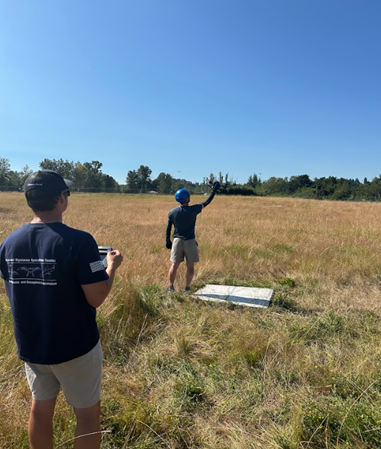Uncrewed aircraft are critical tools for NOAA in meeting its science, service and stewardship missions. However, not everyone can operate any uncrewed aircraft at any time. The NOAA Uncrewed Aircraft Systems Division works closely with potential operators across NOAA, other government agencies, academia and industry to safely and efficiently operate uncrewed aircraft for mission needs. The division works hard to ensure uncrewed aircraft are a safe and efficient tool to gather environmental data for NOAA.

Becoming a Certified Operator
In the United States, the Federal Aviation Administration (FAA) establishes the rules that all crewed and uncrewed aircraft operators follow. Per their regulations, all uncrewed aircraft operators must have their remote pilot certificate that involves passing a knowledge exam and meeting other requirements. Learn more about the requirements to get a remote pilot certificate from the FAA.
Along with becoming a certified remote pilot, NOAA also requires personnel to engage in additional training to maintain the safety, transparency and efficiency of any NOAA uncrewed aircraft operations. NOAA personnel learn to plan and carry out uncrewed aircraft missions, and make sure all operations are in compliance with relevant federal laws and policies for the wellbeing of people, property and the environment. Following successful certification, NOAA certified operators are required to keep their certifications current by regularly piloting uncrewed aircraft.
Planning Operations
All NOAA uncrewed aircraft operations require thorough planning. Operators or project leads have to consider airspace and environmental use requirements, operational risk and alignment with FAA and other federal policies. They also determine which platform is the best tool and what sensors are needed for the job. In order to maintain safe airspace, the Uncrewed Aircraft Systems Division works to make sure all NOAA uncrewed aircraft operations have risk mitigation strategies and all uncrewed aircraft are airworthy.
When proposed operations are deemed non-standard or complex, the division works closely with the mission team to develop safe operational procedures in order to continue gathering the necessary environmental observations.
Leading up to operations, NOAA’s uncrewed aircraft operators also monitor local conditions to make sure flights can still occur safely and effectively.
By incorporating uncrewed aircraft into NOAA’s fleet of research platforms, the agency has been able to improve the safety and efficiency of many of its traditional environmental observation surveys.


